
views
Finding Your Style

Research other blogs that are similar to your blog. Get some ideas for your own blog by noting interesting and compelling details in other people’s blogs. If anything, you’ll also be able to determine what you don’t like about someone's blog! For example, if you’re creating a home and food blog, scroll through other popular home and food blogs. Notice the layout, content, and images on the other blogs. Pay attention to how long the posts are, the frequency of the posts, the writing style, and the subject matter. If you’re creating a business blog, look at how other sites approach a certain business topic. Also, note if the site has an active comments board and how often the writers respond to reader comments.

Consider who you’re writing to, or your audience. The language you use and the style of your writing will shift based on who you are writing the blog post for. If you are writing for a personal blog meant for only close friends and family, you can likely be as honest or casual as you’d like. You also won’t need to explain that Toby is your 4 year old son or Baxter is your cat. Treat a personal blog like a conversation. Write like you are chatting with a close friend or family member. Avoid jargon, complicated sentences, or cliches. The reader wants to feel like they are getting to know you, so don’t be afraid to put your unique voice front and center. If you are writing for a personal blog that is meant for a larger audience, you can still write casually and honestly. But you may need to include references, a glossary, or explanations to ensure your readers can follow along. Though business blogs or marketing blogs may be a bit more formal, they should still have a conversational tone. Above all, you want to avoid confusing or boring the reader. For a business or marketing blog, think about what your readers expect from your blog. Are you providing information to your readers/buyers? Are you trying to persuade them to buy a certain product? It’s also important to think about the information your readers already have. If the majority of your readers are Millennials looking to start their own business, you probably don’t need to provide information about how to use social media. But you may want to give them information on how to adjust their approach to social media to be more business-savvy.

Think about what you can say differently about a certain topic or issue. Consider what you can write about that is different from what everyone else is saying. An effective blog post offers unique information to the reader, whether it's an opinion, experience, or guide. For example, you are writing a blog post about how to make chocolate cake on your personal food blog. Of course, there are many recipes for chocolate cake online. So what makes your recipe stand out? Are you adding interesting ingredients like salt or candy? Or are you using a unique technique to make the chocolate cake?
Opening the Post

Choose your topic. This can be as general or specific as you’d like. But keep in mind, more specific blog posts are usually the most effective. If you are writing a personal blog about fashion, you may want to consider a fashion issue or problem you are interested in discussing. This could be the lack of nice clothing for plus size women, the neon fall trend that won’t go away, or even your struggle with finding the right pair of jeans. If you are writing a business blog, you may want to focus on a particular aspect of your business that might be interesting to your customers. For example, if you run a retail camera store, you may want to talk about the latest camera releases, or a more specific topic like your favorite digital camera on the market.
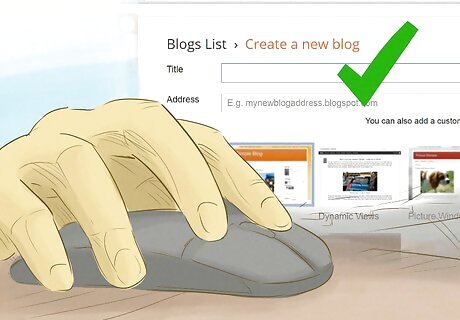
Come up with a title. If you are stuck on a title, try to narrow down the title so it is specific to the blog post. Make the headline of your title strong, concrete, and punchy, which basically will attract your reader. Don’t be afraid to have a bold title. The title is the first thing the reader will see on your blog, so make it attention-grabbing. It may be better to have a simple title, rather than a complicated or confusing one. Though you may want to be snappy or witty, often titles that are clear and easy to read are the most effective. For example, a blog post on your food blog about a chocolate cake recipe could have the title like: “My Amazing Salted Chocolate Cake Recipe”. A blog post about finding the perfect pair of jeans could be: “Blue Jean Blues: Finding the Perfect Pair”. Or something shorter and simpler, like: “My Search for the Perfect Pair of Jeans.” If you are writing a blog post on your favorite camera on the market, you could use a title like: “The Best Point and Shoots Out Right Now”. Or something more formal like: “My Top Ten Best Digital Cameras on the Market”.
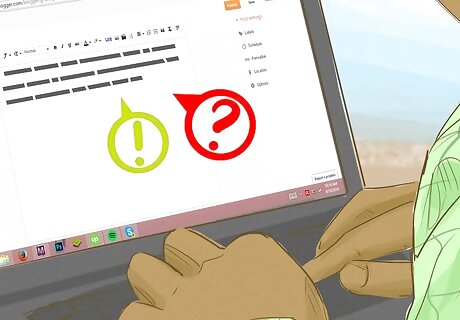
Write a captivating opening. This is the hook that will get people to start reading. In fact, it's proven that if you get people to read the first 3-4 sentences, they are more likely to read the rest of the post. Writing a grabbing opening sentence and paragraph can be difficult, so try these techniques: Identify a need. Think about what problems or issues the reader would want to solve. Create an opening line that promises to answer this need. For example, on your food blog, you identify a need for your reader to learn how to properly ice a cake. Your opening sentences could be: “We’ve all been there. Your child’s birthday is set to start in an hour, but you can’t figure out how to ice the triple layer chocolate cake.” Ask an intriguing question. Use a question that leaves little room for the reader to respond with anything but “yes”. Make the question seem interesting enough to the reader. For example, on your camera blog, you could begin with: “Looking for a digital camera that produces top quality images, but doesn’t weigh a ton? Ready to switch to a point and shoot, but shopping on a budget?” Say something unexpected. But make sure it still relates to the topic of your post. This could be a unique statement or phrase that you haven’t used often on your blog. The idea is to jolt the reader into paying attention. For example, if you often talk about cakes or cookies on your food blog, begin a post on pies with: “Okay readers, it’s time for me to do something radically different on here. I give you: lemon meringue pie.” Make a claim or promise. This technique works well for business blogs that are selling a product or providing product information to their readers. Just make sure you can back up your claim with solid content. For example, the camera post could begin with: “Today, I am going to help you buy the best digital camera you have ever owned.”
Writing and Organizing
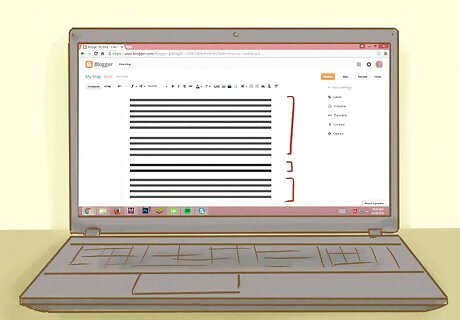
Organize your content. Sometimes a specific topic can lead to pages and pages of relevant information. But most online readers have short attention spans and likely won’t spend hours pouring over your blog post. Work on saying the most you can in the fewest words. Create an outline for the post. Break the topic down into sections, short paragraphs, or subtitles. If you are writing a blog post with a recipe, you may want to create a separate section for the recipe and then a separate section with the directions. Or if you are writing a post with a list, use numbers to organize the content. Download free blog post templates online, which are pre-organized based on the most common blog post types.

Draw on outside sources and content. Many readers will approach your blog post with skepticism. Particularly if you make a claim like “the most amazing chocolate cake ever” or “the best digital cameras”. So don’t be afraid to use outside sources or content to back up your claim. You could include customer testimonials, expert quotes and industry research or data. You could also include a seconding of your claim from another blogger who is considered an expert or tastemaker in the eyes of your audience.
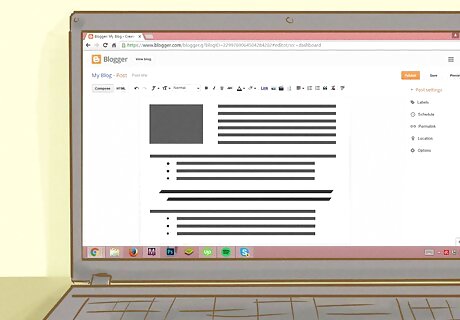
Break down the topic. Give your reader practical, easy to apply advice or information. Avoid wishy-washy content or vague sentences. If you are writing a blog post with a recipe, breakdown each step in the recipe. Explain how the reader can whisk the eggs, combine the wet and dry ingredients, or place the cake in the oven. Be specific and go through each step in a logical order. If you are writing a more opinionated post, like the best ten digital cameras, back up each camera with a personal note about your experience with each camera. Include your reasons why each camera is worth the reader’s attention.
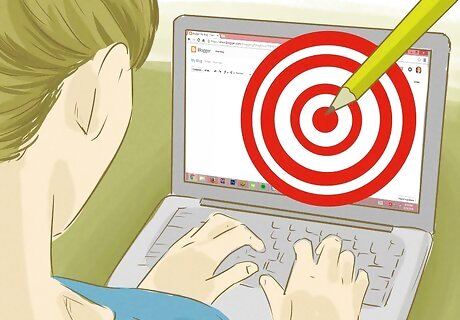
Keep the content concise and to the point. A blog post does not need to be a short novel, or a guide to solving all the reader’s problems. Avoid packing in too much information into one blog post. Remember that your blog has an unlimited amount of space for posts and images. So don’t be afraid to focus on one aspect of a topic and then expand on another aspect in another blog post.
Editing and Closing
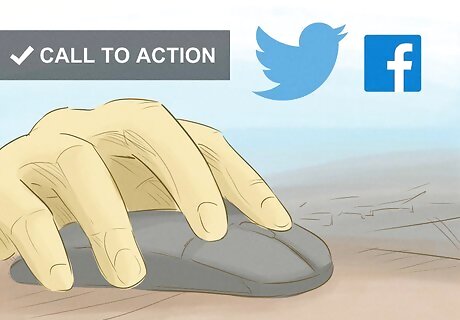
Include a call to action. Get your reader involved in the blog post by asking them a direct question at the end of the post, such as: “what do you think about this recipe?” You can also include a “tweet this quote” option on a quote from the post, or add a share button for Facebook or Twitter.
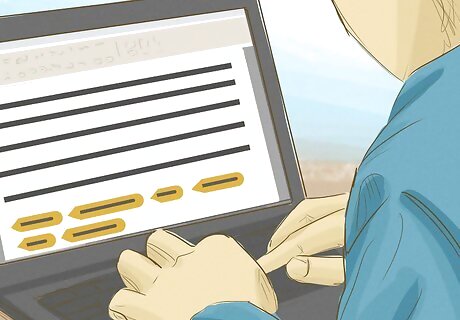
Add tags. Tags are keywords that describe a post. They allow the reader to browse for related content on your blog and encourage your reader to read other posts on your site. Think of tags as keywords, terms, or categories that relate to the post. Avoid a laundry list of terms and only include terms that apply to the topic of the post.

Add a feature image. Images are a good way to keep the reader engage and to break up any long chunks of text. Don’t go too image crazy though. Use one or two high quality images that relate to the topic of the post. Focus on images that look interesting, are easy to understand, and trigger an emotion in the reader.

Revise the post. Reread and edit the post for any grammatical errors. Make sure you have covered the topic in detail and are offering a new perspective on a familiar question or current issues. If you are writing a personal blog post, it may be useful to read the post out loud. That way you can check that the voice sounds natural and casual.
Managing Your Blog
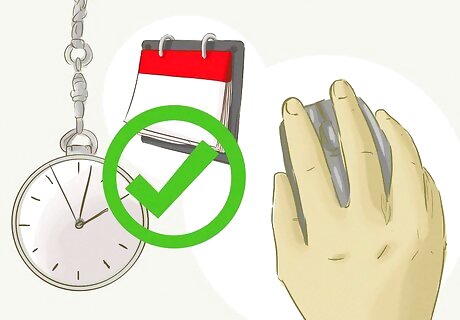
Publish the post at the right time. Based on your readership, it may make more sense to publish the article at a certain time of day or during the week. This will ensure you publish the post when your readers are already online. Most blog experts argue that posts published on weekdays will get more exposure and traffic than posts published on weekends. Public holidays are also not the best times for publishing a post as web traffic is usually already down during these times. Figure out the best time of day for you to publish posts by testing out different publishing times with your audience.

Update the post. Blogs that attract the most readers are the ones with frequent updates. Spend time updating the post and adding to it so it remains fresh in your reader’s minds. If you are updating your blog on a daily, weekly, or monthly basis, keep it consistent so your readers know when to look for new content on your blog.

Respond to reader comments. The best way to build your readership is to maintain an active comments board. Show your readers you care about their thoughts by responding to their comments and starting a dialogue. Responding to reader comments also allows other readers to have conversations with each other on your blog. This builds reader loyalty, and creates a space where readers feel like they can talk and “belong”. It also gives the content of the post more depth by including other opinions and impressions from readers.




















Comments
0 comment